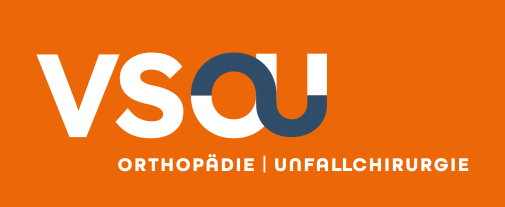Ihre Suche ergab 2 Treffer
Verletzungen des Acromioclaviculargelenkes
Zusammenfassung: Mit einem Anteil von 12% an allen Verletzungen des Schultergürtels machen Instabilitäten des Acromioclaviculargelenkes (ACG) einen wichtigen Stellenwert im klinischen Alltag jeder Kollegin/jedes Kollegen aus. Betroffen sind vor allem junge sportlich aktive Männer mit einem Altersgipfel von 20–40 Jahren, prädestinierte Sportarten sind hierbei insbesondere der Rad- und Bergsport. Neben einer Einteilung in akute und chronische Instabilitäten hat sich die Klassifikation nach Rockwood durchgesetzt, die je nach Grad der Dislokation 6 Typen unterscheidet. Auf Grundlage dieser zeitlichen und anatomischen Einteilungen wird auch das Therapiekonzept erarbeitet. Während bei fehlender oder nur geringer Dislokation im ACG ohne das Vorhandensein einer horizontalen Instabilität (Rockwood Typ 1–3A) das konservative Vorgehen empfohlen wird, ist die operative Stabilisierung ab einem gewissen Dislokationsgrad mit horizontaler Instabilität (Rockwood Typ 3B–6) das Therapieverfahren der Wahl. Die minimalinvasive arthroskopische vertikale ACG-Stabilisierung mittels TightRope und zusätzlicher horizontaler Cerclage hat die Hakenplattenosteosynthese aufgrund sehr guter und zufriedenstellender postoperativer Ergebnisse im klinischen Alltag nahezu komplett abgelöst. Glenohumerale Begleitpathologien können zudem erkannt und therapiert werden. Im Falle einer chronischen Instabilität erfolgt darüber hinaus eine additive autologe Sehnenanlage.
Summary: Accounting for 12% of all shoulder girdle injuries, instabilities of the acromioclavicular joint (ACJ) play an important role in the daily clinical routine of every colleague. Young, athletically active men with an age peak of 20–40 years are mainly affected, with cycling and mountain sports being predominantly affected sports. In addition to a classification into acute and chronic instabilities, the Rockwood classification has become established, differentiating between 6 types depending on the degree of dislocation. The treatment concept is also developed based on these temporal and anatomical classifications. While a non-operative approach is recommended in the absence of dislocation or only slight dislocation in the ACJ without the presence of horizontal instability (Rockwood type 1–3A), surgical stabilization is the treatment of choice from a certain degree of dislocation with horizontal instability (Rockwood type 3B–6). Minimally invasive arthroscopic vertical ACJ stabilization using a TightRope and additional horizontal cerclage has almost completely replaced hook plate osteosynthesis in everyday clinical practice due to very good and satisfactory postoperative results. Glenohumeral concomitant pathologies can also be recognized and treated. In the case of chronic instability, an additional autologous tendon graft is also performed.
State of the Art bei der Frakturprothese am Oberarmkopf
Zusammenfassung:Proximale Humerusfrakturen machen einen großen Anteil an allen Frakturen aus und steigen insbesondere mit zunehmendem Lebensalter aufgrund einer abnehmenden Knochendichte stetig an. Die Wahl des bestmöglichen Therapieverfahrens gestaltet sich oftmals als schwer und dieses Thema wird in der dazu bisher veröffentlichten Literatur kontrovers diskutiert. Bei nicht oder nur gering dislozierten Frakturen ist eine konservative Therapie ein geeignetes Verfahren. Ab einem gewissen Grad der Dislokation wird eine operative Therapie notwendig. Die gelenkerhaltende Operation sollte bei jungen Patientinnen und Patienten grundsätzlich bevorzugt werden. Die primäre inverse Frakturendoprothese bei nicht rekonstruierbaren Frakturen hat in den letzten Jahren aufgrund ihrer zufriedenstellen postoperativen Ergebnisse vermehrt an Bedeutung gewonnen. Klare Indikationen zum endoprothetischen Gelenkersatz liegen in einem schmalen Kalottenfragment, einer fehlenden medialen Abstützung, einer Trümmerzone im Bereich der Tubercula sowie patientinnen-/patientenspezifischen Faktoren wie einer vorbestehenden Omarthrose oder Rotatorenmanschetteninsuffizienz. Der grundlegende Vorteil der inversen Totalendoprothese gegenüber der anatomischen Hemiprothese liegt in einer Unabhängigkeit von der Funktion der Rotatorenmanschette. Auch wenn die Funktion der inversen Prothese nicht von der knöchernen Einheilung der Tubercula abhängig ist, sollte eine Tubercularefixation angestrebt werden, da hierdurch bessere funktionelle Ergebnisse erzielt werden. Die primäre inverse Frakturprothese zeigt gute langfristige funktionelle Ergebnisse und stellt somit das Verfahren der Wahl bei nicht mehr rekonstruierbaren proximalen Humerusfrakturen dar.
Summary: Proximal humerus fractures account for a large proportion of all fractures and increase steadily with age due to decreasing bone density. The choice of the best possible therapeutic procedure is often difficult and this topic has been controversially discussed in the literature published to date. In the case of non-displaced or only slightly displaced fractures, conservative therapy is a suitable procedure. From a certain degree of dislocation, surgical therapy becomes necessary. Joint-preserving surgery should generally be preferred in young patients. Primary inverse fracture arthroplasty for nonreconstructible fractures has become increasingly important in recent years because of its satisfactory postoperative results. Clear indications for endoprosthetic joint replacement include a narrow calvarial fragment, lack of medial support, a zone of comminution in the tuberosity, and patient-related factors such as preexisting omarthrosis, or rotator cuff insufficiency. The fundamental advantage of the inverse total endoprosthesis over the anatomic hemiprosthesis is its independence from rotator cuff function. Although the function of the inverse prosthesis is not dependent on the bony healing of the tuberosity, tuberosity re-fixation should be aimed for, as this achieves better functional results. The primary inverse fracture prosthesis shows good long-term functional results and is therefore the procedure of choice for proximal humerus fractures that can no longer be reconstructed.
